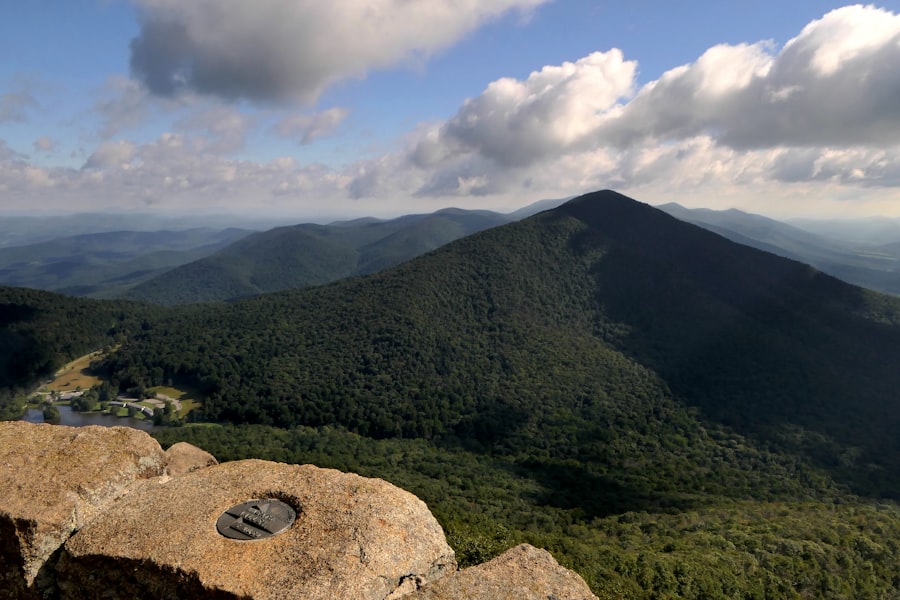Download links
How to install Banaue Rice Terraces: A UNESCO Heritage Site APK?
1. Tap the downloaded Banaue Rice Terraces: A UNESCO Heritage Site APK file.
2. Touch install.
3. Follow the steps on the screen.
Description
The Banaue Rice Terraces, often referred to as the “Eighth Wonder of the World,” boast a rich history that dates back over 2,000 years. These terraces were carved into the mountains of Ifugao province in the Philippines by the indigenous Ifugao people, who developed sophisticated agricultural techniques to cultivate rice in a challenging mountainous environment. The construction of these terraces is believed to have begun around 2000 B.C., although some estimates suggest that the rice cultivation practices may have started even earlier.
The terraces are not merely agricultural fields; they represent a deep connection between the Ifugao people and their land, showcasing their ingenuity and resilience in adapting to their environment. The historical significance of the Banaue Rice Terraces extends beyond their age; they are a testament to the cultural identity and traditions of the Ifugao people. The terraces were built using traditional methods, relying on hand tools and local materials, which reflects a sustainable approach to agriculture that has been passed down through generations.
The Ifugao’s knowledge of their environment, including water management and soil conservation, has allowed them to maintain these terraces for centuries. This agricultural heritage is intertwined with their spiritual beliefs, as rice is not only a staple food but also plays a central role in rituals and celebrations. The terraces thus serve as a living museum of Ifugao culture, embodying their history, spirituality, and connection to the land.
Key Takeaways
- The Banaue Rice Terraces were built over 2,000 years ago by the Ifugao people without the use of modern tools and machinery.
- The terraces are a symbol of the Ifugao’s rich cultural heritage and their sustainable farming practices, and are often referred to as the “Eighth Wonder of the World.”
- The engineering behind the terraces is a marvel, with the Ifugao people using stone and mud walls to create a complex irrigation system that allows water to flow from the mountaintops to the rice paddies below.
- The terraces face threats from modernization, climate change, and tourism, which can lead to erosion, landslides, and loss of traditional farming practices.
- Conservation efforts for the Banaue Rice Terraces include UNESCO’s designation as a World Heritage Site, as well as local initiatives to preserve the terraces and promote sustainable tourism.
- Visitors to the Banaue Rice Terraces can expect stunning views, opportunities to learn about the Ifugao culture, and the chance to participate in eco-friendly activities such as hiking and birdwatching.
The Cultural Significance of Banaue Rice Terraces
Rituals and Festivals
The Ifugao people celebrate various rice festivals that honor their deities and ancestors, reflecting their gratitude for the land’s fertility. These festivals often involve elaborate ceremonies, dances, and offerings, reinforcing community bonds and cultural continuity.
Sustainable Practices and Ecological Balance
The intricate irrigation systems that support the rice terraces demonstrate an understanding of ecological balance. Water is channeled from nearby rivers and streams through a network of bamboo pipes and dikes, ensuring that each terrace receives adequate moisture without depleting resources. This harmonious relationship with the environment is a core aspect of Ifugao culture, emphasizing respect for nature and the importance of stewardship.
The Engineering Marvel of Banaue Rice Terraces

The engineering prowess displayed in the construction of the Banaue Rice Terraces is nothing short of remarkable. Spanning approximately 10,360 square kilometers, these terraces ascend to heights of over 1,500 meters above sea level, showcasing an extraordinary feat of human ingenuity. The terraces were meticulously designed to maximize arable land while minimizing soil erosion and water runoff.
Each terrace is built with stone walls that not only support the structure but also help retain moisture and nutrients in the soil. This careful planning reflects a deep understanding of agricultural principles and environmental science. The irrigation system that sustains these terraces is equally impressive.
The Ifugao people developed an intricate network of canals and dikes that channel water from mountain springs to each terrace. This system ensures that water flows evenly across the fields, allowing for efficient rice cultivation. The engineering techniques employed in constructing these terraces have been recognized by experts as advanced for their time, demonstrating a sophisticated grasp of hydrology and landscape management.
The terraces’ design also allows for crop rotation and diversification, which enhances soil fertility and reduces pest infestations. This combination of engineering skill and ecological awareness has enabled the Ifugao to cultivate rice sustainably for centuries. Source: National Geographic
The Threats to Banaue Rice Terraces
| Threats | Impact |
|---|---|
| Deforestation | Loss of biodiversity and soil erosion |
| Climate Change | Changes in weather patterns affecting rice production |
| Urbanization | Encroachment on agricultural land |
| Infrastructure Development | Disruption of natural water flow and ecosystem |
Despite their historical and cultural significance, the Banaue Rice Terraces face numerous threats that jeopardize their existence. One of the most pressing issues is climate change, which has led to unpredictable weather patterns affecting rainfall and temperature. These changes can result in droughts or excessive rainfall, both of which can devastate rice crops and disrupt the delicate balance of the terrace ecosystem.
Additionally, rising temperatures can lead to increased pest populations, further threatening agricultural productivity.
As younger generations migrate to urban areas in search of better opportunities, traditional farming practices are being abandoned.
This shift not only diminishes the labor force needed to maintain the terraces but also leads to neglect and deterioration of these historical structures. Furthermore, infrastructure development projects such as roads and buildings encroach upon terrace lands, causing soil erosion and destabilizing the delicate irrigation systems that have sustained these agricultural marvels for centuries. The combination of these factors poses a serious risk to the future of the Banaue Rice Terraces.
The Conservation Efforts for Banaue Rice Terraces
Recognizing the importance of preserving the Banaue Rice Terraces, various conservation efforts have been initiated by both local communities and international organizations. One notable initiative is the UNESCO World Heritage designation granted in 1995, which has helped raise awareness about the cultural significance of these terraces and mobilized resources for their preservation. This recognition has also encouraged sustainable tourism practices that benefit local communities while promoting conservation efforts.
Local government units have also implemented programs aimed at revitalizing traditional farming practices among younger generations. Educational initiatives focus on teaching sustainable agriculture techniques and fostering an appreciation for Ifugao culture. Community-based organizations have been established to engage locals in conservation efforts, emphasizing the importance of maintaining the terraces not only for agricultural purposes but also as a vital part of their heritage.
These grassroots movements aim to empower local communities to take ownership of their cultural landscape while ensuring that traditional knowledge is passed down through generations.
Visiting Banaue Rice Terraces: What to Expect

Capturing the Beauty of the Terraces
Photographers and nature enthusiasts alike will find ample opportunities to capture stunning images that reflect both the artistry of human engineering and the splendor of nature.
Immersing in Local Culture
Upon arrival, visitors can engage with local communities through guided tours that provide insights into traditional farming practices and cultural rituals. Many local guides are descendants of Ifugao farmers themselves, offering authentic perspectives on life in this unique region. Tourists may have the chance to participate in rice planting or harvesting activities, gaining hands-on experience while fostering a deeper appreciation for the labor involved in maintaining these terraces.
A True Cultural Experience
Additionally, local markets offer an array of handicrafts and traditional foods, allowing visitors to support local artisans while savoring authentic Ifugao cuisine. In conclusion, a visit to the Banaue Rice Terraces is not just a journey through stunning landscapes; it is an opportunity to connect with a living culture that has thrived for millennia amidst challenges posed by nature and modernity alike.
If you’re interested in exploring more about the beauty of nature and landscapes, you may enjoy reading about the Banaue Rice Terraces in the Philippines. These stunning terraces are a UNESCO World Heritage Site and are known for their intricate design and cultural significance. For a related article, check out this article on 8k8.mom that discusses fun and challenging games that you can play.
FAQs
What are the Banaue Rice Terraces?
The Banaue Rice Terraces are ancient terraces carved into the mountains of Ifugao in the Philippines. They are often referred to as the “Eighth Wonder of the World” and are a UNESCO World Heritage Site.
How old are the Banaue Rice Terraces?
The Banaue Rice Terraces are estimated to be over 2,000 years old, making them one of the oldest and most remarkable examples of terrace farming in the world.
What is the significance of the Banaue Rice Terraces?
The Banaue Rice Terraces are not only a stunning example of ancient engineering and agricultural practices, but they also hold cultural and historical significance for the indigenous people of the Philippines, particularly the Ifugao tribe.
How were the Banaue Rice Terraces constructed?
The terraces were painstakingly carved into the mountainside by hand, using only basic tools and the labor of the Ifugao people. The construction of the terraces is a testament to the ingenuity and skill of ancient agricultural societies.
What is the current state of the Banaue Rice Terraces?
While the Banaue Rice Terraces are a marvel to behold, they are also facing challenges such as erosion, deforestation, and the migration of younger generations away from traditional farming practices. Efforts are being made to preserve and protect the terraces for future generations.





